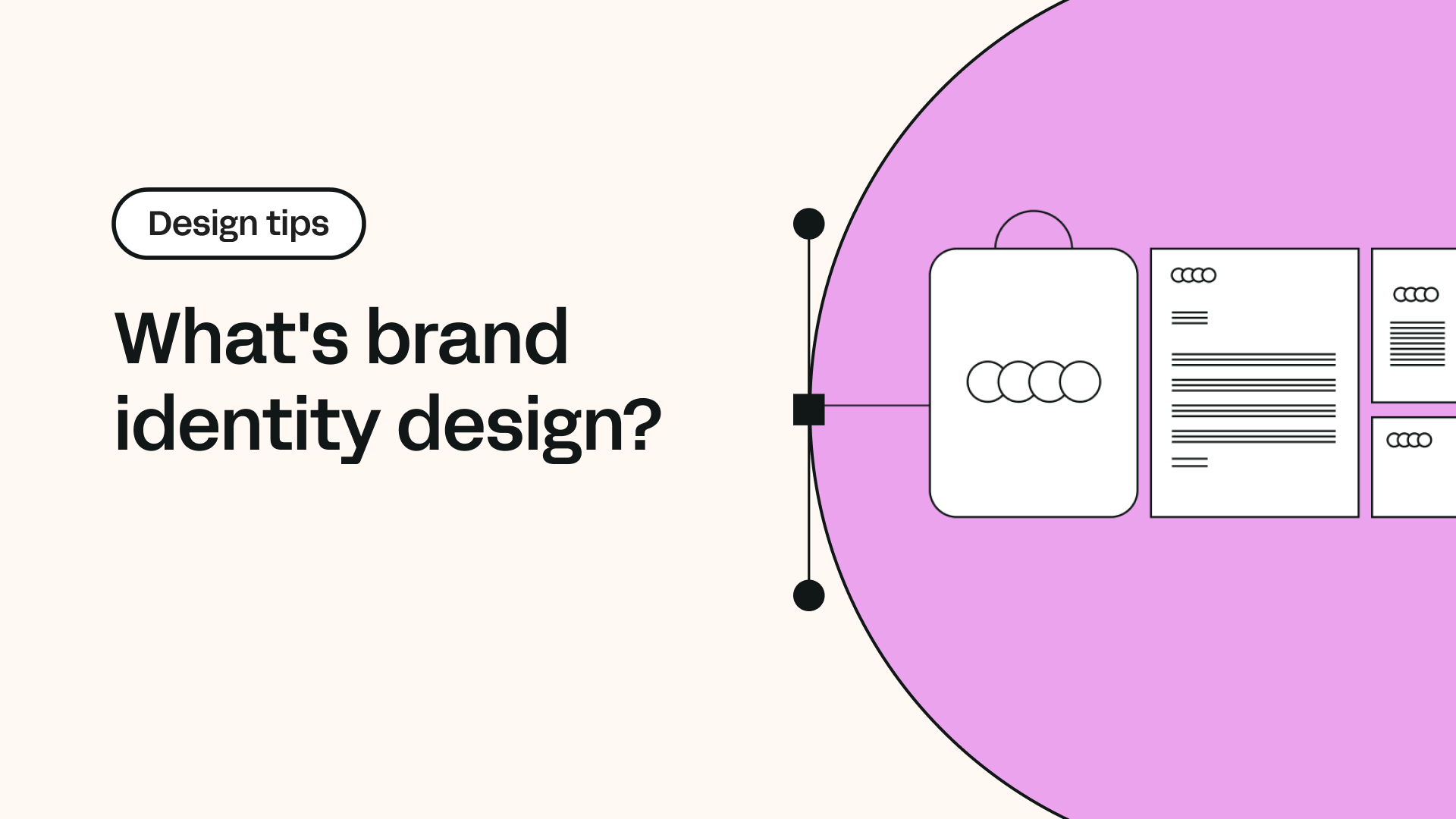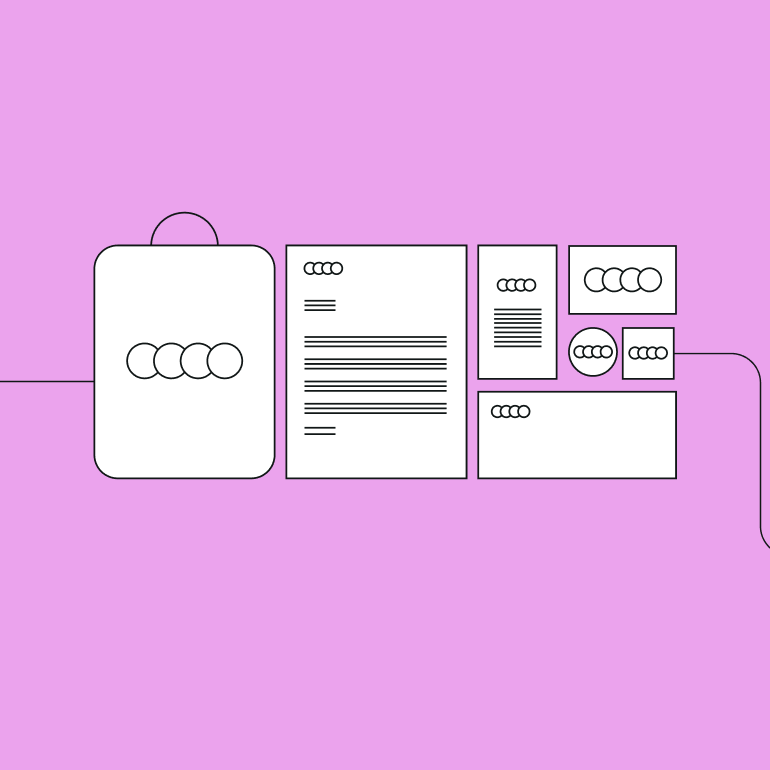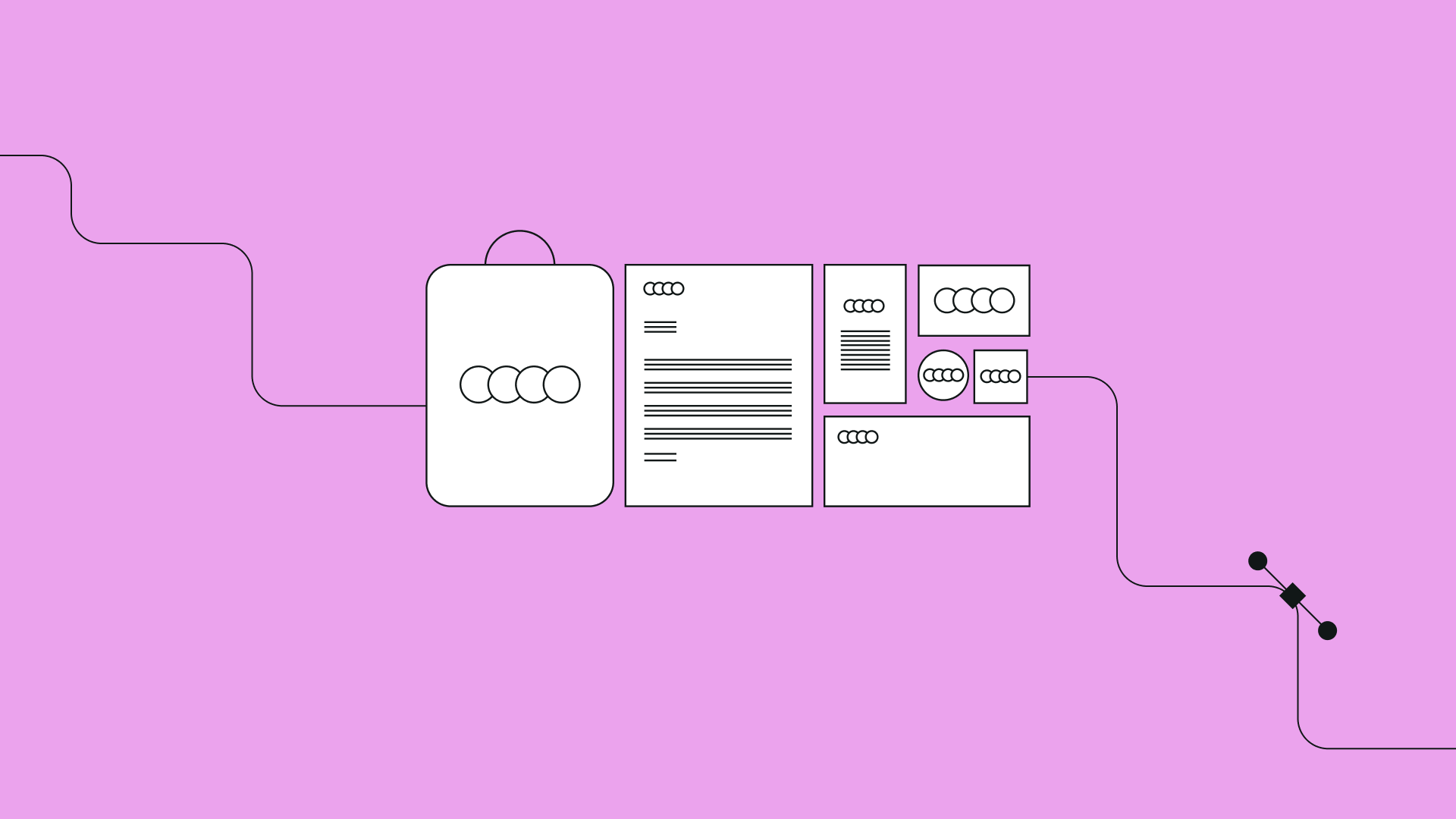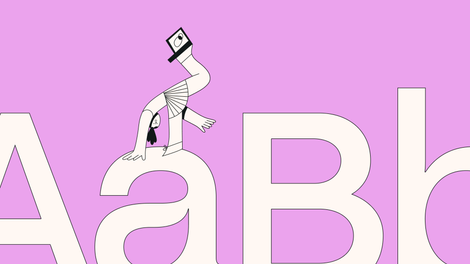Learn the basics of brand identity design, why it’s important, and how you can create a memorable brand for your company.
If a friend asks you to recommend a “good brand” of a car to buy, what would you say? Would you describe the vehicle's features or the quality of its graphic design? You’ll probably describe the car’s best features and value for money.
What makes a brand “good” is not the pictures we’ve seen or the ads we’ve read but the product or service itself. However, if the company didn’t have a brand, we’d be at a loss for words. How can you describe a particular product or service without a brand?
If you’re working in the marketing department of a company that sells services or goods (yep, most companies do!), then you need to understand all the facets of the branding process.
What makes certain brands more successful than others? How can you design an entire brand identity that stands out and stands the test of time? This Design Tips article explores brand identity and shares our five steps for successful brand identity design.
But first, let’s get definitive!
Jumpstart your ideas with Linearity Curve
Take your designs to the next level.
What’s a brand identity?
A strong brand identity is usually defined in a brand style guide or a brand book, supported by the company’s core values and critical business goals.
Brand identity design encompasses all your graphic design decisions that define a brand. It includes a company’s visual identity, such as the logo, color palette, and graphic elements, as well as marketing materials such as business cards and product packaging.
But, a brand’s identity is also more than visual elements and physical products – it’s what creates the entire picture of your brand in the minds of consumers. This means that the marketing channels, messaging, and the quality of customer service are all integral parts of a memorable brand identity.
Is brand identity design the same as corporate design?
Brand identity design includes corporate design, but it’s not 100% the same.
Corporate design (also referred to as corporate identity design) includes all the visual design for the company that we mentioned earlier (logo, colors, fonts, etc.) and how these are applied to the various materials needed for conducting business internally and externally.
Think email signatures, business cards, letterheads, brochures, presentations, banners, branded vehicles, employee uniforms, intranet software, office design and décor, and even company swag.
Look at it this way: if someone is buying something from the company, receiving a service, communicating with an employee, or visiting the office, how will they know it’s your company that they’re dealing with? That’s the corporate identity.
The difference between the brand and corporate identity is that a company may have multiple unique brands but only one corporate identity.
For example, your bank probably offers specific products and services for teenagers or students. These are often branded differently because they need to appeal to a different target customer. But, this doesn’t change the bank’s overall corporate identity.
If your company is synonymous with its product or service, for instance, a coffee shop or an app, the brand identity and corporate identity will overlap.

What’s the difference between brand identity design and branding?
Once you’ve designed the company’s brand identity, you’ll set to work with branding. Branding is deciding where all the graphic design elements for your company or product will live. The branding activities include social media channels, websites, merchandise, brick-and-mortar stores, and how your product or service is delivered.
Branding includes all the marketing efforts to bring the brand identity into the real world. Just like the iron brands used to mark each ranch’s cattle, you need to use some tools to ‘mark’ your company’s assets.
A successful branding effort reflects the brand identity design well. Poor branding is when the brand guide isn’t followed or the brand identity isn’t executed well.
Why is it important to have a brand identity?
You need more than a logo to leave a lasting impression on a potential customer. Well-executed brand identity increases brand awareness and helps new and prospective customers find their way back to you.
Embark on Your Graphic Design Journey
Discover how to become a graphic designer in 10 simple steps. Our guide breaks down everything you need to start your creative career.
Brand identity shapes the brand image
The way customers perceive the brand is called the brand image – it’s what people see and feel when they think about your company’s products and services.
This may or may not align perfectly with the brand’s identity, and that’s why brand identity design is so important. Brand identity design is part of the company’s strategy to reach and convince its target customers that its brand is the best choice for them.
When the customers’ brand image corresponds with the company’s brand identity and the right audience is targeted, you’ll have happy customers (and earn revenue).

If your brand's visual language doesn't align with your product offering, you won't have a consistent brand image.
A great brand identity leads to brand equity
As mentioned, when potential customers are frequently given the same message, they build an image of the brand in their minds. If the brand image is good and they decide to buy the product or service, half of the battle is won!
The other half of the battle is getting new customers to become returning customers. Once the customer has bought the product or service and finds that it meets (or exceeds) their expectations, they’ll continue to purchase the product or service as their need arises.
Through continued good experiences that reaffirm the positive brand image they have, brand equity is built. Brand equity is the accumulation of brand awareness, positive consumer experiences, and affiliation with the brand.
Brand equity is not an entirely abstract concept – brands with high equity are seen as more valuable. They can charge more for their products or services precisely because they have a “good” name and are sought after.
An effective brand identity builds a positive company culture
Your company’s brand doesn’t only matter to your customers.
The employees and potential candidates also care about the brand – a lot! Employees will be proud to be a part of a company if its brand reflects their values and goals.
Employees want to know what a company stands for and be able to integrate with the company culture and play their part in shaping it.

In terms of culture, an effective brand identity affects employee attitudes and behaviors. Does your company have great-looking posters with aspirational values plastered on the office walls, but it hasn’t implemented any programs to reach these goals?
Employees see right through that and build a negative company brand image. You’ll see the effects of this in low morale, unproductivity, and actively disengaged employees.
Now, you should have a good idea of what brand identity is all about. Let’s look at some of the most well-known brands and reflect on what makes them so successful.
What are some of the most recognizable brands and why?
According to a study by Signs, some of the most memorable logos include IKEA, Target, Apple, 7Eleven, and Burger King. They measured how accurately 150 Americans could draw the brand logos from memory.
Whereas this doesn’t conclusively prove that these are the most memorable brands in the world (or even in the US), the study does indicate how observant people are of logos in general. And, perhaps it proves that a brand is so much more than a logo!
Ready to create brand assets that pack a punch?
Visit our Academy for free marketing design courses.
Here are a few examples of brands with highly effective branding.
1. IKEA
IKEA is an iconic Swedish furniture brand headquartered in the Netherlands. It’s the biggest furniture company in the world. IKEA sells affordable, ready-to-assemble furniture and household goods.
The company was founded in the 1940s, and it’s still going strong eighty years later. Why? Because the products work well and are affordable.
What makes the IKEA brand so memorable? First of all, their logo has hardly changed since the early 1950s – the four letters of the company name are placed inside an ellipse shape, inside a rectangle. We also noticed that the logo uses primary colors (blue and yellow, previously red).

Besides being around for many decades and sticking to a consistent brand style, IKEA’s products are handled by their customers because they need to assemble the furniture themselves. This means people spend a lot of time interacting with IKEA’s branding before using the product.
IKEA essentially sells an entire experience (assembling affordable, well-designed furniture and then using it), which leaves a lasting positive impression on their customers.
2. Apple
Apple is another brand that has built a strong identity and customer loyalty.
It’s well-known that Steve Jobs was incredibly pedantic about the Apple brand and spent much of his time testing Apple products and giving feedback on product designs. He was also highly intuitive about Apple’s messaging and marketing touchpoints.
The Apple logo has remained pretty consistent throughout the years, which could also explain why 20% of the Signs study respondents could redraw it accurately.
Although it was reportedly difficult to work with Jobs, he played a huge role in creating Apple’s image: high-end cutting-edge technology, beautiful and quality design, and an incomparable user experience.
To compete with Microsoft and IBM and carve out its niche, Apple positioned itself as anti-establishment and non-mainstream computer technology. This approach is exemplified by its famous 1983 MacIntosh ad – a parody of George Orwell's 1984 – which is said to be one of the most iconic ads of all time.
3. Coca-Cola
Although not featured in the Signs study, Coca-Cola is undeniably one of the most internationally recognizable brands in the world. Coca-Cola's brand identity has seen many "flavors" over the years, but its iconic red brand color and ribbon-like motif have claimed a brand image that no other can replicate.
As we’ve seen with IKEA and Apple, Coca-Cola has kept its logo consistent over the years since we’ve enjoyed coke. And yes, their name is synonymous with the drink!
More than its consistency in identity projects, the Coca-Cola brand is consistent in its product – the original coke has always been the same. Even though the brand introduced other flavors such as vanilla and cherry, these were branded slightly differently to keep the original flavor as unmistakably “coke” as possible.
This is perhaps the most significant contributor to the success of Coca-Cola; the product always satisfies customer expectations.
4. Disney
We recently wrote a post on the history of Disney, and it’s clear that this entertainment giant deserves a spot on this list.
From producing many of the highest-grossing movies of all time to the invention of the theme park to the first entirely computer-generated animated movie and owning a host of other amazing companies, Disney holds a special place in our memories.
To show just how successful Disney’s visual branding is, check out the image below that’s instantly recognizable as Disney but doesn’t contain its logo!
5. Google
Yes, of course, we had to include Google. We even use the web search engine’s name as a verb to replace “internet search.” Unlike the other examples in our list, Google is an entirely digital product.
If you have an Android phone, Gmail account, or use Chrome to do web searches, then you have Google.
Google is currently the third most valuable brand in the world. And, to be honest, we love all the free tools and features that Google gives us to make the internet more useful.
We think this is the key to their brand’s success: offering value to its users. Another reason why many people are fond of the Google brand is because of reports of their fantastic company culture. For instance, did you know that Google took a low-carbon approach and hired 200 goats to ‘mow’ the lawn and fertilize the soil on their Mountainview Campus?
Google’s brand stretches far beyond its products and services to its values and how its employees are treated.

5 steps to successful brand identity design
Brand identity design includes all the graphic design components that represent your brand. Once you’ve gone through this step-by-step guide, you’ll be able to put together a brand book with all the identity elements you need to represent your company to consumers accurately.
1. Understand the company’s positioning
This is the market research part of the brand identity design process. It would help if you found out who exactly your target market is and what you can offer them compared to other brands.
Ask yourself the following questions:
- What is our product/service?
- How is it delivered?
- Who is our audience? In other words, who will buy our product?
- Who are our competitors, and how does our company stack up?
- What is our company’s unique value proposition? In other words, what does it offer customers that our competitors don’t?
Once you've answered these questions, you can start creating a differentiated brand identity.
2. Shape a personality for the company
This is the messaging part of designing a brand identity. To develop a cohesive identity, you must show customers how they can relate to your company’s brand.
Ask yourself these questions:
- Who are we? What do we believe in, and what’s our vision?
- How do we speak (the tone or voice)?
- What are we passionate about?
- What feelings do we want to bring out in others?
3. Create the company’s symbols
This is the design step. What will represent the brand and distinguish it from others?
You must make thoughtful choices when creating the logo or wordmark, picking your brand color scheme, getting the font combinations right, and adding other graphic elements such as shapes, icons, and photography.
Business owners usually emphasize logo design, and we know it’s challenging to develop fresh ideas. Keep referring to your answers in Steps 1 and 2 to lead you in your design choices. You can also learn about the various types of logos and check out some cool logo ideas to find inspiration.
With Linearity Curve (formerly Vectornator), you can explore awesome fonts and typefaces, create sketches, and make a mood board for your design ideas. This makes it a powerful tool for brand identity design, especially when using our Auto Trace and Pen Tool features.
If you’ve been using Canva until now, see why Linearity Curve is a great Canva alternative for marketing design.
4. Choose the right materials and channels
This is the branding part of the process. Where will your company’s brand live? Your branding choices are highly dependent on Steps 1 to 3.
Creating branded assets, corporate identity designs, the company’s website, choosing your social media channels and where to build communities, as well as merchandising–these core elements represent the life of the brand in the world and the touchpoints with potential existing customers.
Some questions you could ask:
- If the company was a person, where would they hang out?
- What would they enjoy doing?
- What would they wear?
- Where would they meet with customers?
- What would they get a customer as a gift for their birthday?
This step is all about how you’re going to create the ideal brand image.
5. Remain consistent
Our final step is not a step at all but an ongoing process to ensure that the brand is upheld in all areas so that the message is clear to the customer. Brand consistency ensures that the brand identity is uniform and always recognizable.
Maintaining a consistent brand identity creates a more cohesive brand image in customers and employees. In other words, everyone will see the brand more or less the same way because they receive the same messages and service.
This is why you need a brand guide. You can keep referring to this document to maintain a consistent style in your company’s look, messaging, and corporate identity.
Wrapping up
This article covered the meaning of brand identity and how it differs from corporate identity and branding. We took a deeper dive into what brand identity design is and studied five examples of great brands. Lastly, we went through our five steps for creating a compelling brand identity.
Say you need to run a social media campaign (Step 4), but you’re not entirely sure who your company’s competitors are. Before creating any social media graphics, we recommend you go back to Steps 1 and 2.
Even if you’ve mastered Steps 1 to 4, your branding efforts are likely to fail if you don’t remain consistent (Step 5).

We hope these branding tips have given you the tools to create a cohesive identity and avoid common branding mistakes (such as not doing any brand identity design at all!).
Jumpstart
your ideas with
Linearity Curve
Take your designs to the next level.


Share this!
Sharné McDonald
Sharné is a contributing writer to the Linearity Blog. She has 10+ years' experience in graphic design and marketing and holds a Master's degree in Art Education.


:quality(75))
:quality(75))



:quality(75))

:quality(75))
:quality(75))



